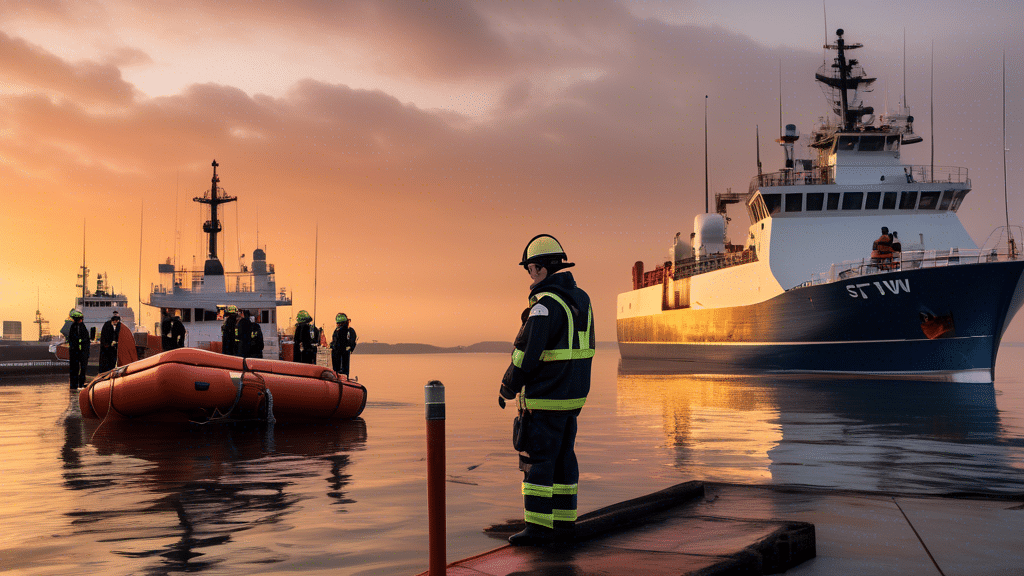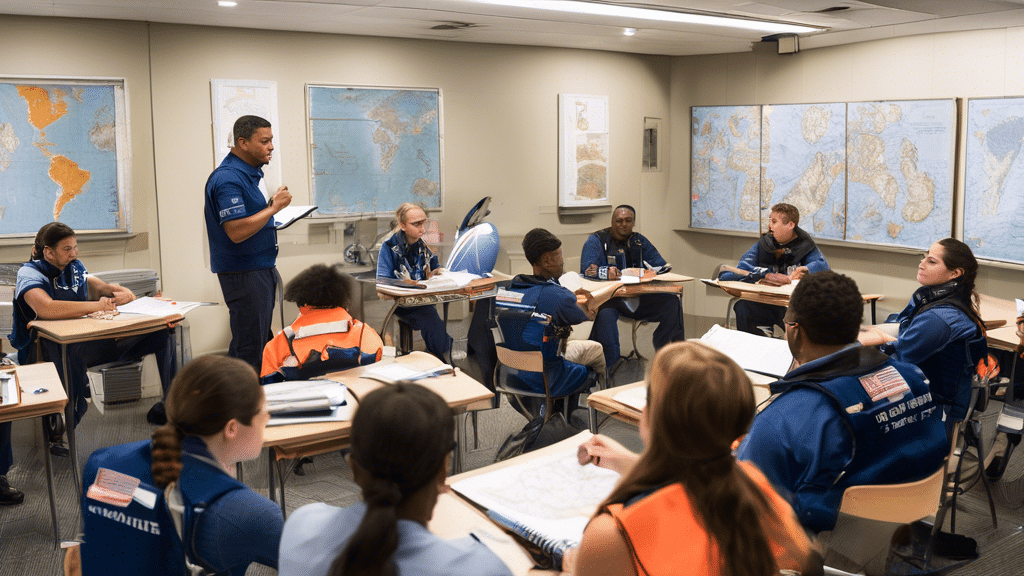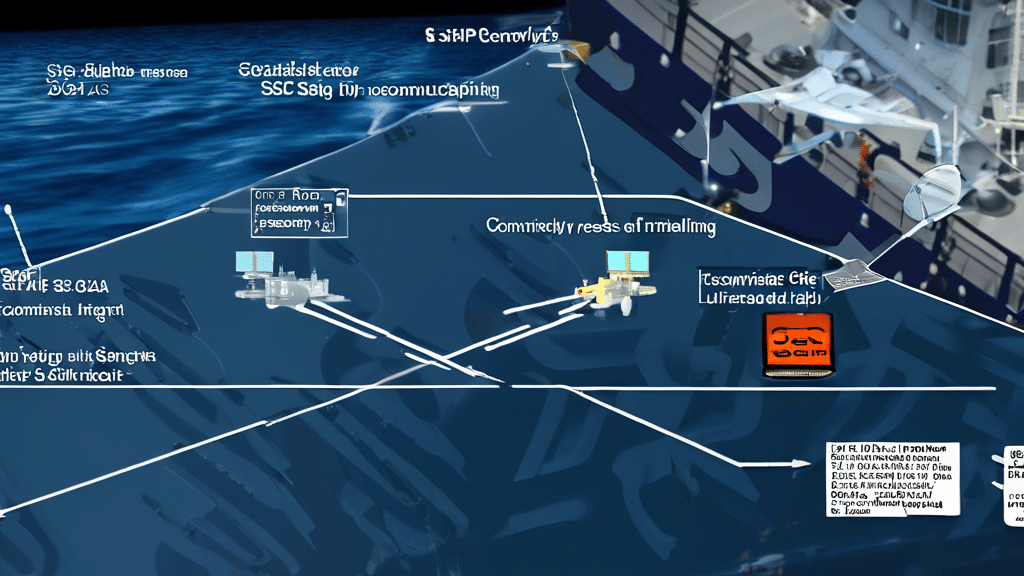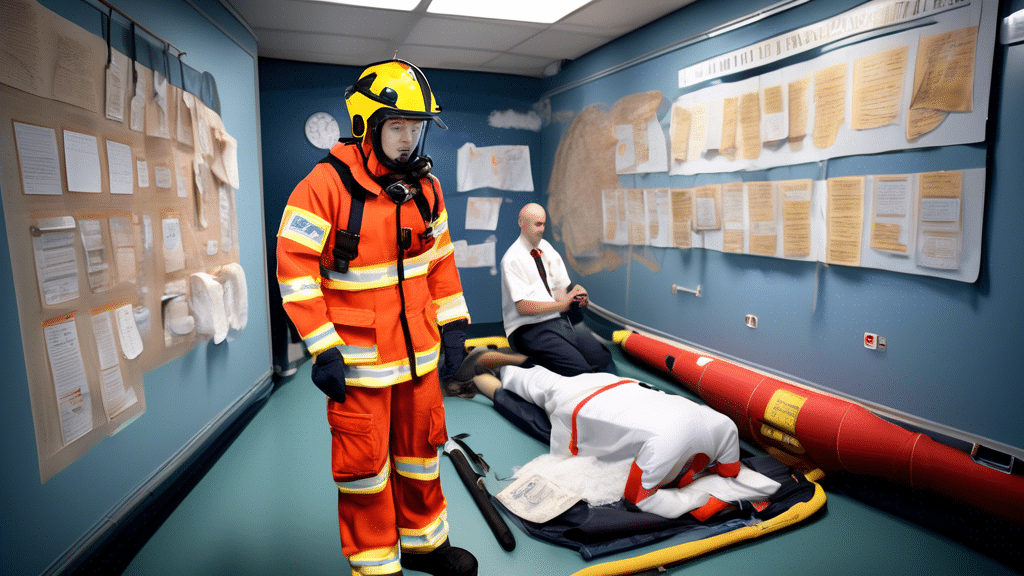Setting sail on an exciting maritime career begins with a crucial step: mastering the Standards of Training, Certification, and Watchkeeping for Seafarers (STCW). This foundational course equips aspiring seafarers with the necessary skills and certifications to navigate the vast oceans confidently. Through rigorous training, you acquire expertise in essential areas like firefighting, first aid, personal survival techniques, and maritime safety. Compliance with STCW standards is not just a regulatory requirement; it’s a testament to your readiness and capability to ensure safety at sea, making you a valuable asset in the maritime industry.
As you transition from classroom learning to your first job at sea, the journey can seem both exhilarating and daunting. Thorough preparation is key to a smooth transition. Knowing what to pack, understanding what life onboard entails, and blending into the maritime work culture are all crucial steps for a successful start. Building a professional network can open doors to job opportunities and mentorship, guiding your career progression. Being adaptable and prepared to embrace the unique challenges of a seafarer’s life will pave the way for long-term growth and success in this dynamic field.
Understanding STCW Training: The Foundation for Your Maritime Career
Overview of STCW (Standards of Training, Certification, and Watchkeeping for Seafarers) Requirements
The STCW (Standards of Training, Certification, and Watchkeeping for Seafarers) convention outlines a comprehensive set of standards for the training and certification of seafarers worldwide. Established by the International Maritime Organization (IMO), the STCW convention aims to ensure that all seagoing personnel are adequately educated and skilled to perform their duties effectively and safely. Adhering to these standards is essential, as compliance is mandatory for commercial vessels operating in international waters. Understanding STCW requirements is the first step for anyone aspiring to pursue a career in the maritime industry.
STCW regulations cover a wide range of aspects, from basic safety training to specific skills for various seafaring roles. The core STCW requirements include:
- Basic Safety Training (BST): A set of courses that equip seafarers with essential survival skills, including firefighting, personal safety, and basic first aid.
- Security Awareness Training: Education on how to react and protect oneself during security threats, such as piracy or terrorism.
- Proficiency in Survival Craft and Rescue Boats (PSCRB): Training in the use of lifeboats, life rafts, and other life-saving appliances.
- Bridge Resource Management (BRM): Training to develop teamwork and communication skills essential for bridge personnel.
- Engine-room Resource Management (ERM): Similar to BRM but tailored for engineering department personnel.
- Advanced Firefighting: More in-depth training for dealing with fires onboard ships.
- Medical First Aid: Training in providing onboard medical care.
Key Skills and Certifications Gained During STCW Training
STCW training imparts a variety of critical skills and certifications that are foundational for a successful maritime career. Here’s a closer look at some of the key competencies you will gain:
- Firefighting Skills: One of the initial and crucial components of STCW training is firefighting. Seafarers are equipped with the knowledge to handle and extinguish fires onboard, utilizing various firefighting equipment and strategies.
- Basic First Aid: All seafarers are trained in basic first aid. This includes CPR, managing wounds, and stabilizing injured crew members until professional medical help can be reached.
- Survival Techniques: Trainees learn survival techniques, including the use of life jackets, life rafts, and understanding emergency signals. This training ensures that they can rapidly respond and survive in the event of an emergency.
- Security Awareness: Modern seafaring requires awareness of various security threats. STCW training covers the identification and response to security challenges, such as piracy and terrorist activities.
- Navigation and Watchkeeping: For deck officers, STCW encompasses fundamental navigation and watchkeeping skills. This ensures they can safely and efficiently manage a ship’s course and operations.
- Mechanical and Technical Proficiency: For engineers, STCW training includes proficiency in managing and maintaining the ship’s engines and other mechanical systems.
Upon completion of the requisite courses, seafarers are awarded certificates that are internationally recognized. These certifications are crucial as they validate the seafarer’s capabilities and compliance with global safety and operational standards.
Importance of STCW Compliance in the Maritime Industry
Compliance with STCW standards is not merely about fulfilling a legal requirement; it has broader implications for the safety, efficiency, and reputation of maritime operations. Here are some reasons why STCW compliance is indispensable:
- Enhancing Safety: The primary goal of STCW regulations is to improve safety at sea. By ensuring that all crew members are trained to a high standard, the risk of accidents and emergencies can be significantly mitigated.
- Global Recognition: STCW certifications are internationally recognized. This opens up global employment opportunities for seafarers and ensures that they can work on vessels operating in international waters.
- Operational Efficiency: Well-trained seafarers contribute to more efficient ship operations. Knowledgeable and skilled crew members are better at handling their responsibilities, leading to smoother and more productive voyages.
- Legal Compliance: Vessels operating without STCW-certified crew risk severe penalties, including fines and detention at port. Compliance ensures adherence to international maritime laws, avoiding legal complications.
- Boosting Career Prospects: For individual seafarers, holding STCW certifications enhances employability and career prospects. Maritime employers prefer hiring certified professionals, as it reflects a commitment to safety and professional standards.
Adhering to STCW standards is a non-negotiable aspect of a maritime career. Understanding these requirements, obtaining the necessary training and certifications, and consistently maintaining compliance positions seafarers for success in an industry that prioritizes safety, efficacy, and global cooperation.
https://www.virtualmaritime.academy/vma-courses/
Navigating Your First Job at Sea: Tips and Strategies for New Seafarers
Preparing for Life Onboard: What to Pack and Expect
Starting your maritime career can be both exciting and daunting. Proper preparation is key to making this transition successfully. When packing for your first voyage, consider functionality and necessity over quantity. Essential items include:
- Appropriate Work Clothing: Durable, comfortable, and easily washable clothes are vital. Ensure you have enough workwear, including safety boots and gloves.
- Personal Hygiene Products: Bring ample supplies of toiletries like toothpaste, shampoo, and soap, as ports may not always have familiar brands.
- Documentation: Always carry your passport, seafarer’s book, STCW certificates, and any other required documents.
- Electronics: Pack essential gadgets such as a laptop, headphones, and chargers to help stay connected with loved ones.
- Comfort Items: Include things that make you comfortable and relaxed, such as books, a digital music player, or personal mementos.
While on board, expect to undergo an orientation that will familiarize you with the ship’s layout, safety protocols, and your specific job role. Be mentally prepared for the initial adjustment period as you get accustomed to the vessel’s rhythm and dynamics.
Building a Professional Network and Finding Job Opportunities
Networking is invaluable in the maritime industry. Establishing robust professional relationships can open doors to new opportunities and provide support throughout your career. Here are some tips to help you build a solid network:
- Join Maritime Associations: Becoming a member of professional organizations like the Nautical Institute or the International Maritime Organization (IMO) helps you connect with seasoned professionals and stay updated on industry trends.
- Attend Industry Events: Participate in seminars, conferences, and workshops. These events are excellent venues for meeting industry peers and potential employers.
- Utilize Social Media: Platforms like LinkedIn and Facebook groups focused on maritime careers can help you connect with potential employers and colleagues.
- Maintain Relationships: Keep in touch with your STCW training classmates and instructors. They can often provide valuable job leads and recommendations.
- Seek Mentorship: Look for a mentor with experience in the maritime industry who can offer guidance, support, and insights into career progression.
Finding job opportunities as a new seafarer can be competitive. Here are some strategies to assist you:
- Leverage Recruitment Agencies: Agencies specializing in maritime placements can help match your skills and qualifications with suitable job openings.
- Frequent Job Portals: Websites like Maritime Connector and Sea Career have job listings specifically for seafaring positions.
- Direct Applications: Contact shipping companies directly to inquire about job openings and submit applications proactively.
- Stay Updated on Industry News: Reading maritime industry publications can inform you about upcoming job openings and emerging trends.
Adapting to the Maritime Work Environment and Long-Term Career Growth Strategies
Adapting to life at sea involves adjusting to a unique set of challenges and opportunities. Here are some critical aspects to consider:
- Understanding Shipboard Hierarchy: Familiarize yourself with the chain of command and the roles and responsibilities of each crew member. Respecting this hierarchy is crucial for maintaining order and efficiency on board.
- Effective Communication: Clear communication is essential for safety and operational success. Learn the standard maritime terminology and communication protocols.
- Physical and Mental Health: The demanding nature of maritime work requires good physical and mental health. Ensure you stick to a healthy routine, get ample rest, and reach out for support if needed.
- Staying Professional: Maintain a professional attitude, be punctual, and complete your duties diligently. Building a reputation for reliability can significantly impact your career growth.
For long-term career growth, consider the following strategies:
- Continuous Learning: The maritime industry is constantly evolving. Pursue additional certifications, training, and educational opportunities to stay updated and enhance your qualifications.
- Career Planning: Set clear career goals and identify steps needed to achieve them. Align your efforts towards roles that match your long-term ambitions, whether it’s climbing the ranks or specializing in a particular area.
- Performance Reviews: Regular feedback from superiors can provide insights into areas for improvement. Use this feedback constructively to enhance your skills and performance.
- Networking: Continue expanding your professional network. Strong industry connections can provide guidance, support, and opportunities for advancement.
- Stay Adaptable: Be open to new experiences and roles. Adaptability can help you navigate changes in the industry and seize unexpected opportunities.
Embarking on your first job at sea marks the beginning of an exciting career in the maritime industry. With proper preparation, strong networking, and a commitment to continuous learning, you can navigate this transition successfully and set a solid foundation for future growth.
In conclusion, transitioning from STCW training to your first job at sea is a significant milestone in your maritime career. STCW training provides the essential foundation, equipping you with critical skills and certifications that are indispensable in the maritime industry. Compliance with STCW standards ensures you are well-prepared to handle the demands of life at sea, from safety protocols to efficient watchkeeping.
As you embark on your first job, be mindful of the preparations required to thrive in this new environment. Packing wisely and setting realistic expectations about life onboard is crucial. Equally important is developing a professional network; leveraging connections and job resources can open doors to numerous opportunities.
Finally, adaptability and a proactive approach to career development will serve you well in the long run. Being prepared to face the challenges and embracing the unique lifestyle of a seafarer can lead to a rewarding and successful maritime career. By integrating the foundational knowledge from STCW training with practical strategies for navigating your first job, you will be poised to make a smooth transition from the classroom to the deck.














